Partnership with Wires
Nature in All Her Glory
Kangaroos/ wallabies
Mobs of kangaroos and wallabies are a common sight around Wanderlust, especially near reception and at the back of the kitchen area. Known for their distinctive hopping gait and powerful hind legs, these herbivores typically eat grasses, leaves, and other vegetation, and are most active in the late afternoon and early evening.
Interesting fact: a female kangaroo can hold an embryo in her womb till the time is right for the baby to come, which means if the natural environment is too dry or wet, the mob will hold off bringing new joeys into the group.

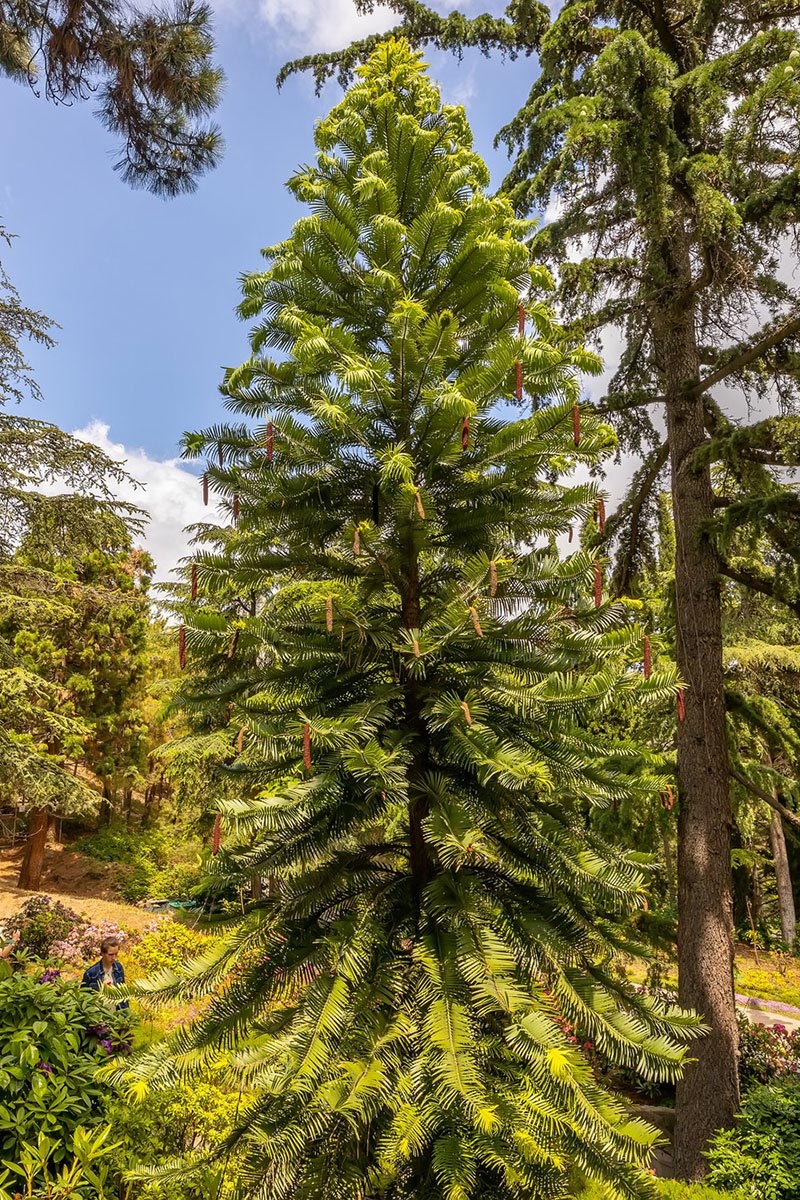
The Wollemi Pine
In August 1994, a new species of tree was discovered in Wollemi National Park, just 15kms from Wanderlust. The Wollemi Pine is considered one of the oldest and rarest species of plant on the planet.
Considered a ‘living fossil’, the pine's closest relatives are fossils from the Cretaceous and early Tertiary periods about 100 million years ago. Fossils with similar features also occurred in the Jurassic as long as 150 million years ago. Only a small grove of the trees has been found, with knowledge of its location and access to the site strictly limited to a small number of scientists and rangers, because the trees' very survival depends on their isolation.
We have reintroduced three of these incredible trees onto the property, in the hope we can help the species prosper. Visit them in the grotto.
Wollemi Pine
In August 1994 a new species of tree was discovered nearby our property (10-15km away), named the Wollemi Pine.
We are reintroducing 3 of them into our property so the specy can prosper. You can see them at the Grotto.
It is a ‘living fossil’ whose closest relatives are fossils from the Cretaceous and early Tertiary periods about 100 million years ago. Fossils with similar features also occurred in the Jurassic as long as 150 million years ago. Only a small grove of the trees has been found, with knowledge of its location and access to the site, strictly limited to a small number of scientists and rangers, because the trees' very survival depends on their isolation.
Rock Orchids
Rock orchids are typically found in shady areas, on south-facing rocks where they receive the right amount of sunlight to survive and thrive. Look out for them on the rocks near the creek and in the grotto.
These orchids are known for their unique and intricate blooms of yellow and white. They are hardy plants that are well-adapted to growing in rocky, mountainous terrain. Typically flowering in spring (September), they are a stunning addition to the natural landscape during that time of the year. They are an important part of the ecosystem, attracting native bee pollinators.

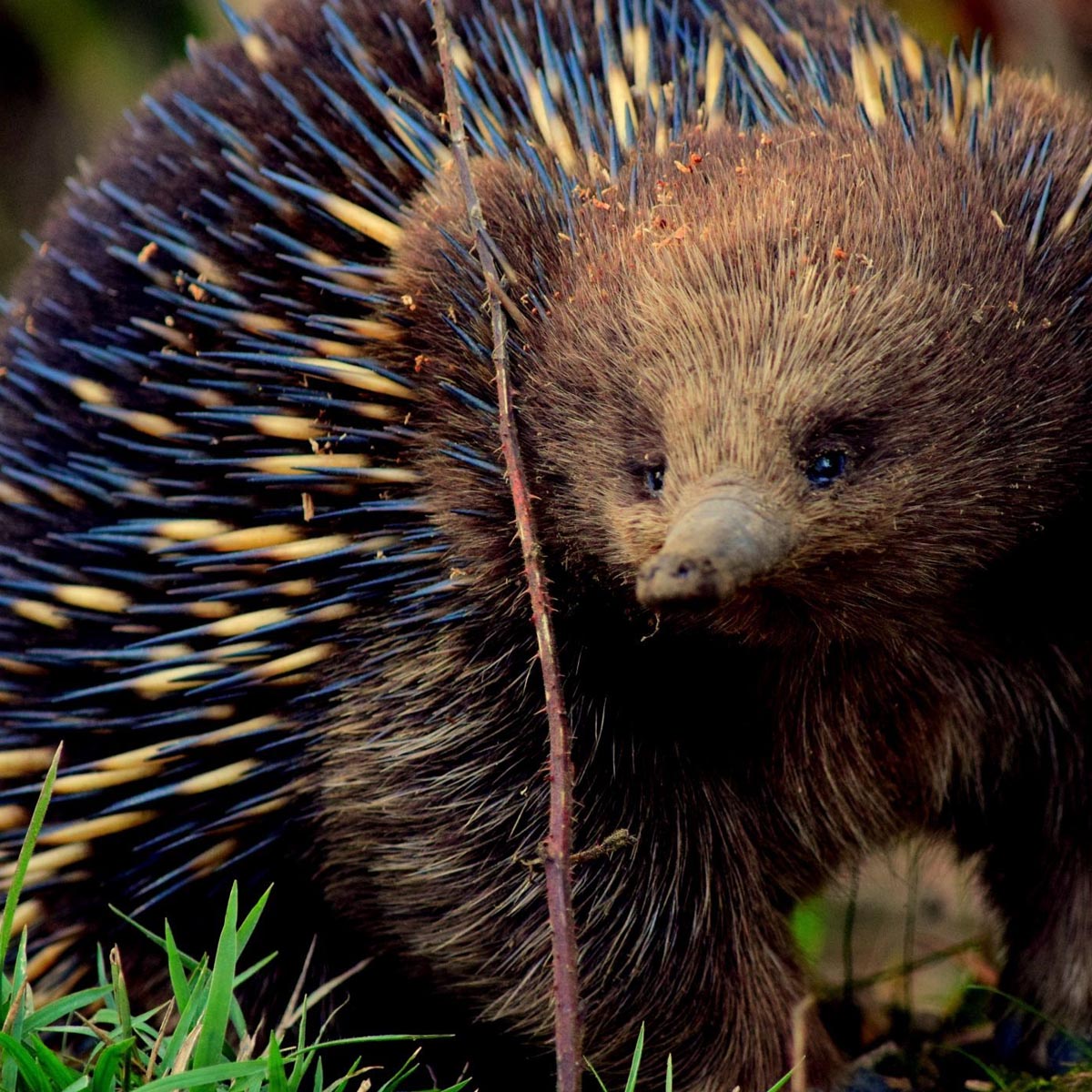
Echidnas
Echidnas, also known as spiny anteaters, are native to Australia and New Guinea.
They have a distinctive, spiky appearance due to thick hair follicles on their bodies that act as spikes protecting them from predators. Echidnas are solitary animals that are active during the day and forage for food at night. They primarily eat ants and termites, using their long snout and sticky tongue to capture their prey. They are also known for their strong digging abilities, using their sharp claws to burrow into the ground for shelter.
Echidnas are considered a monotreme, which means they lay eggs rather than giving birth to live young. They are a unique and fascinating part of the Australian wildlife, and if you are lucky, you might spot one near the grotto.
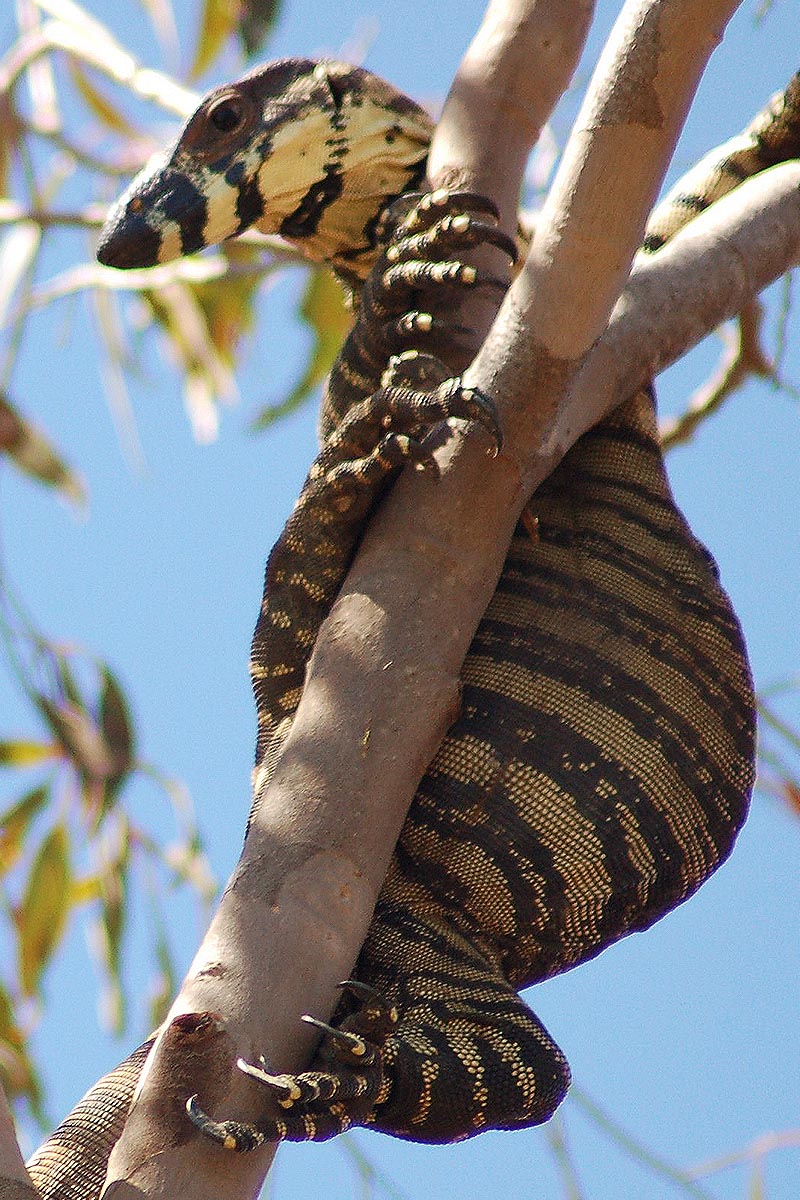
Goannas
Goannas can grow over two metres in length and are known for their powerful jaws and sharp claws. They are opportunistic predators and will eat a variety of prey, including small mammals, birds, reptiles, and insects –they are very partial to eggs!
It is important to note that it is not recommended to feed goannas, as this can cause them to become reliant on human-provided food and lose their natural foraging skills. Leaving food around can have the same result.
Goannas
Goannas can grow over two-metres and are opportunistic predators that eat small mammals, birds, reptiles, and insects. They are very partial to eggs, too!
It's important not to feed these monitor lizards, as it can make them reliant on human snacks, losing their natural foraging skills. Leaving food around can often lead to goanna mayhem, too!
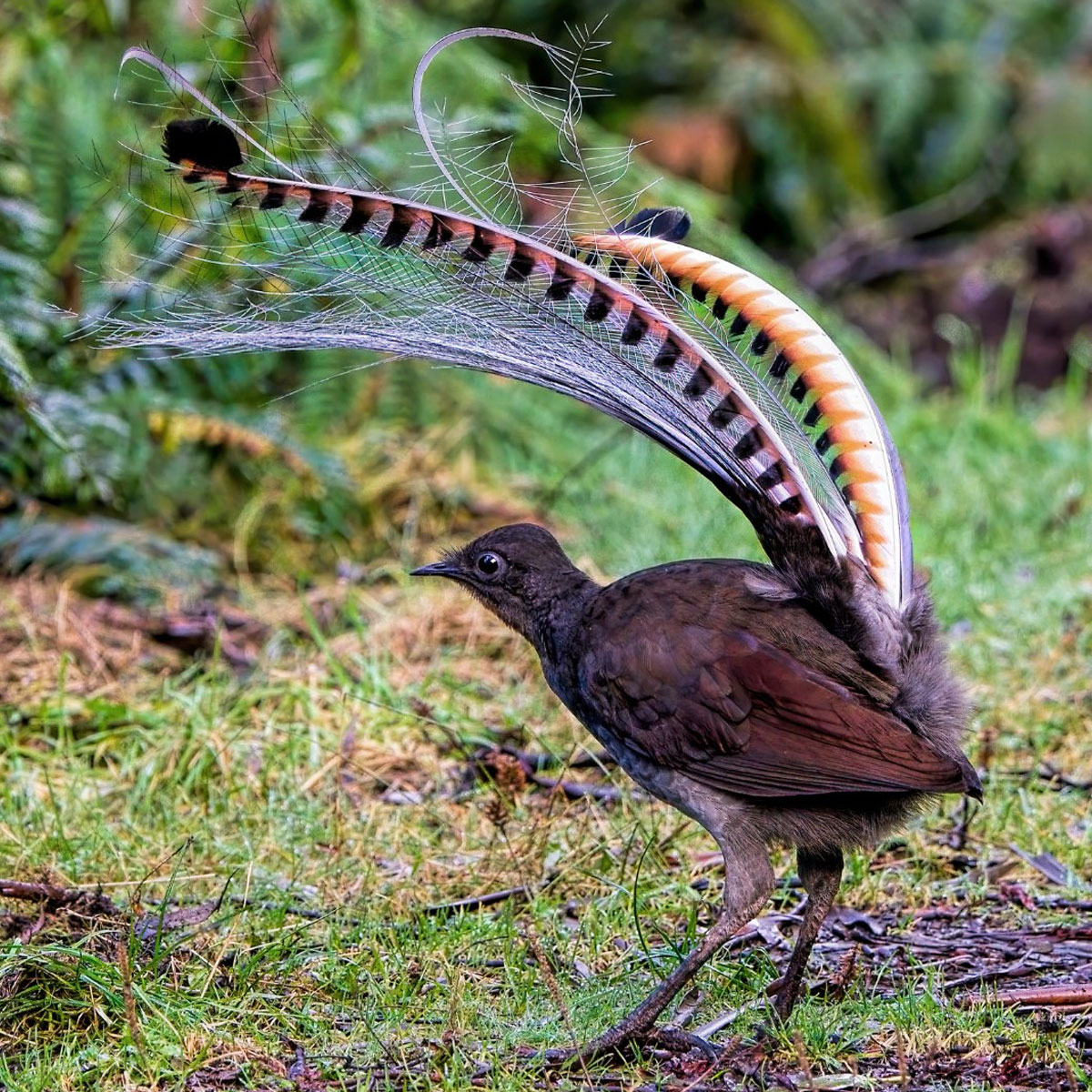
Lyre Birds
Lyrebirds are a group of ground-dwelling birds known for their spectacular courtship displays and their remarkable ability to mimic a sounds, including other birds, animals, and even man-made sounds such as chainsaws, a baby crying and the clip clop of a running horse! They are known for their long tail feathers, which resemble the shape of a lyre, an ancient musical instrument. Happiest in dense, moist forests, lyre birds are most active during the day, and feed on insects, worms and other small animals, as well as fruits and seeds.
Lyre birds can often be seen near reception and strolling through various campsites. They are also known to frequent the area around the grotto, so keep an eye out as you explore the property.
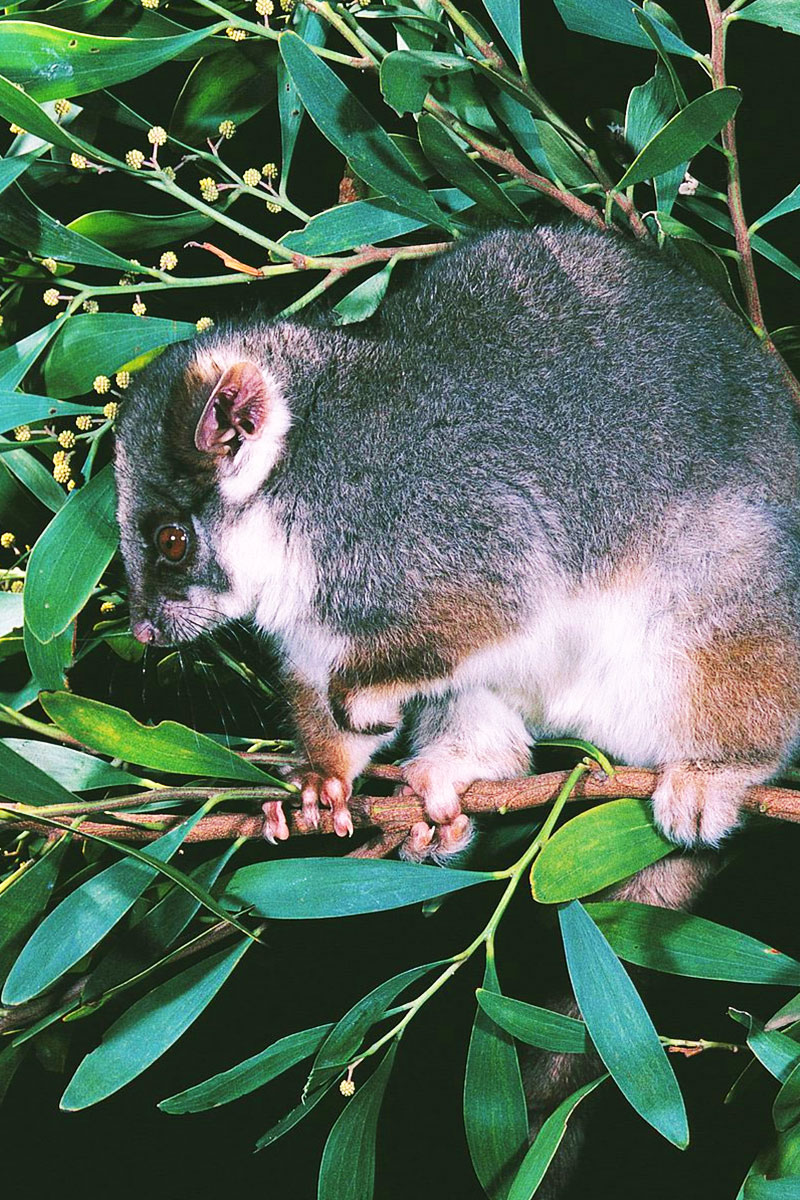
Possums
Possums are a group of marsupials that come in a variety of species and sizes, and are known for their thick fur, sharp claws, and prehensile tails.
Possums are arboreal animals and are typically active at night. They spend most of their time in trees, where they forage for food and rest during the day. They feed on a plant material such as leaves, fruit, and flowers.
Please be conscious not to leave food outside or to feed the possums as this can disrupt their natural behaviour and diet. It can also cause them to become reliant on human-provided food, which can be harmful to their health.
Possums
Possums are a group of marsupials that come in a variety of species and sizes, and are known for their thick fur, sharp claws, and prehensile tails.
Possums are arboreal animals and are typically active at night, they spend most of their time in trees, where they forage for food and rest during the day. Possums are herbivores and feed on a variety of plant material such as leaves, fruit, and flowers.
It is important to note that it is not recommended to leave food outside or to feed them, as it can disrupt their natural behavior and diet, it can also cause them to become reliant on human-provided food, which can be harmful to their health.
Wombat
Wombats are a marsupial known for their sturdy and compact bodies. They have thick fur and short, stocky legs with strong claws, which help them to dig burrows and forage for food. They are herbivores and primarily feed on grasses, roots, and bark. One of the most distinctive features of wombats is their square-shaped feces, which is caused by the presence of three muscles in their anus that allow them to compress and shape their feces before they are excreted. Wombats are solitary animals and are active at night or during the day. Observing them in their natural habitat can be a unique and rewarding experience for visitors to the area, but it is important to remember not to interfere with their natural behavior and respect their space.
It is always best to admire them from a safe distance and not to feed them.
Wombats
Wombats have thick fur and short, stocky legs with strong claws, which help them to dig burrows and forage for food. They eat grasses, roots, and bark, and one of their most distinctive features is square-shaped scat – keep an eye out around the property!
We recommend admiring them from a safe distance and not feeding them.
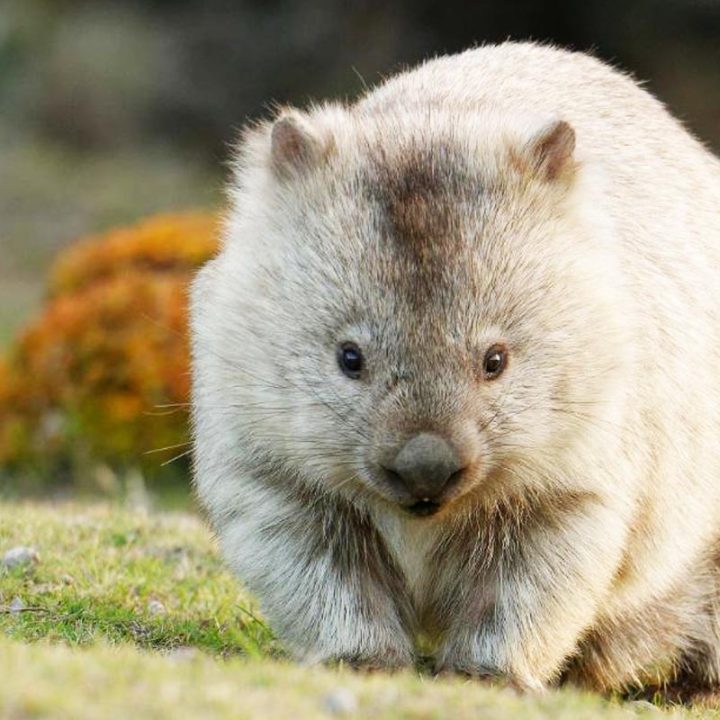
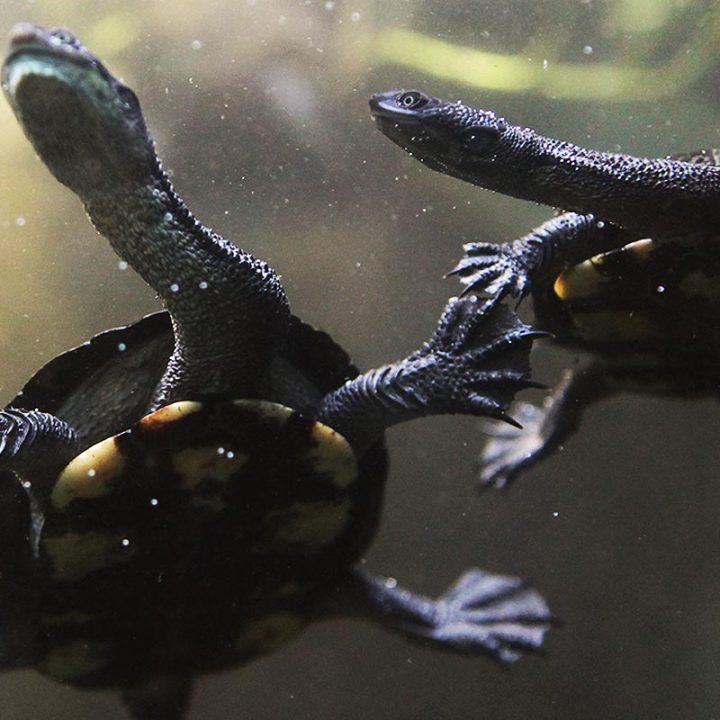
Long-Neck Turtles
Long-neck turtles, also known as snake-necked turtles, are are known for their long, flexible necks that can reach up to twice the length of their carapace (shell). They have a brown or black color that allows them to blend in well with their surroundings.
They are aquatic animals commonly found in still or slow-moving water, such as dams, swamps, and creeks. Active during the day, they eat a variety of aquatic plants and small animals such as insects, crustaceans and small fish. They are known for their strong swimming abilities and can often be seen basking on logs and rocks in the sun.
Long Neck Turtles
Long-neck turtles, also known as snake-necked turtles, are are known for their long, flexible necks that can reach up to twice the length of their carapace (shell). They have a brown or black color that allows them to blend in well with their surroundings.
Long-neck turtles are aquatic animals and are commonly found in still or slow-moving water, such as dams, swamps, and creeks. They are active during the day, and feed on a variety of aquatic plants and small animals such as insects, crustaceans and small fish. They are also known for their strong swimming abilities and can be seen basking on logs and rocks in the sun.
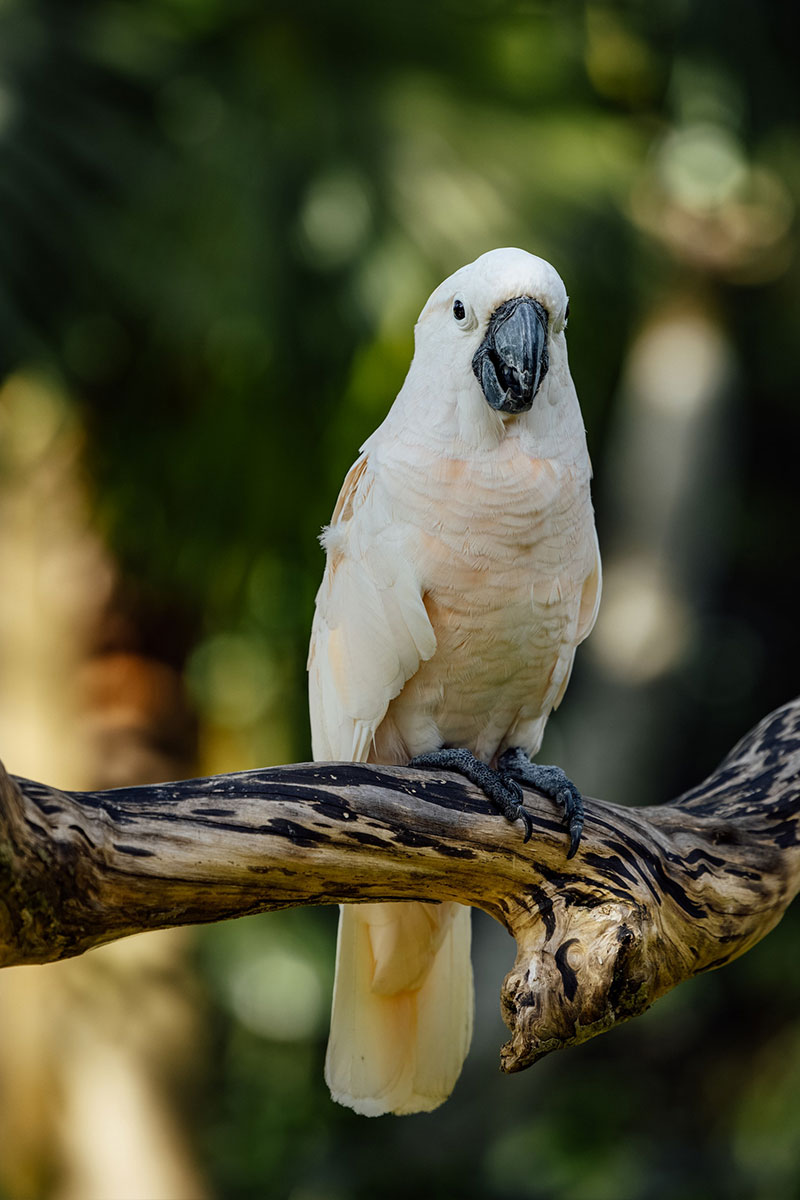
Cockatoos
Cockatoos are a group of parrots native to Australia and Indonesia, known for their striking plumage and distinctive crests. They come in a variety of species and colours, including Sulphur-crested cockatoos, and both red-tailed and yellow-tailed black cockatoos. Known for their intelligence and playful personalities, as well as their loud and distinctive calls, cockies are social birds that live in flocks, and are active during the day. They feed on a variety of seeds, fruits, nuts, and insects.
Cockatoos
Cockatoos are parrots native to Australia and Indonesia, known for their striking plumage and distinctive crests. They come in a variety of species and colours, including sulphur-crested white and yellow cockatoos, and both red-tailed and yellow-tailed black cockatoos. They are known for their intelligence and playful personalities, as well as their loud, distinctive calls. They are social birds that live in flocks, and are active during the day, feeding on seeds, fruits, nuts, and insects.
Eucalyptus
Eucalypts are known for their distinctive, fragrant leaves and their tall, straight trunks. They come in a variety of species all with unique characteristics such as bark shedding, coloured flowers, and patterns.
Eucalypts – known in the bush as 'gums' – are an important tree for many animals, as they provide shelter and food. These incredible trees also provide us with medicine and timber.
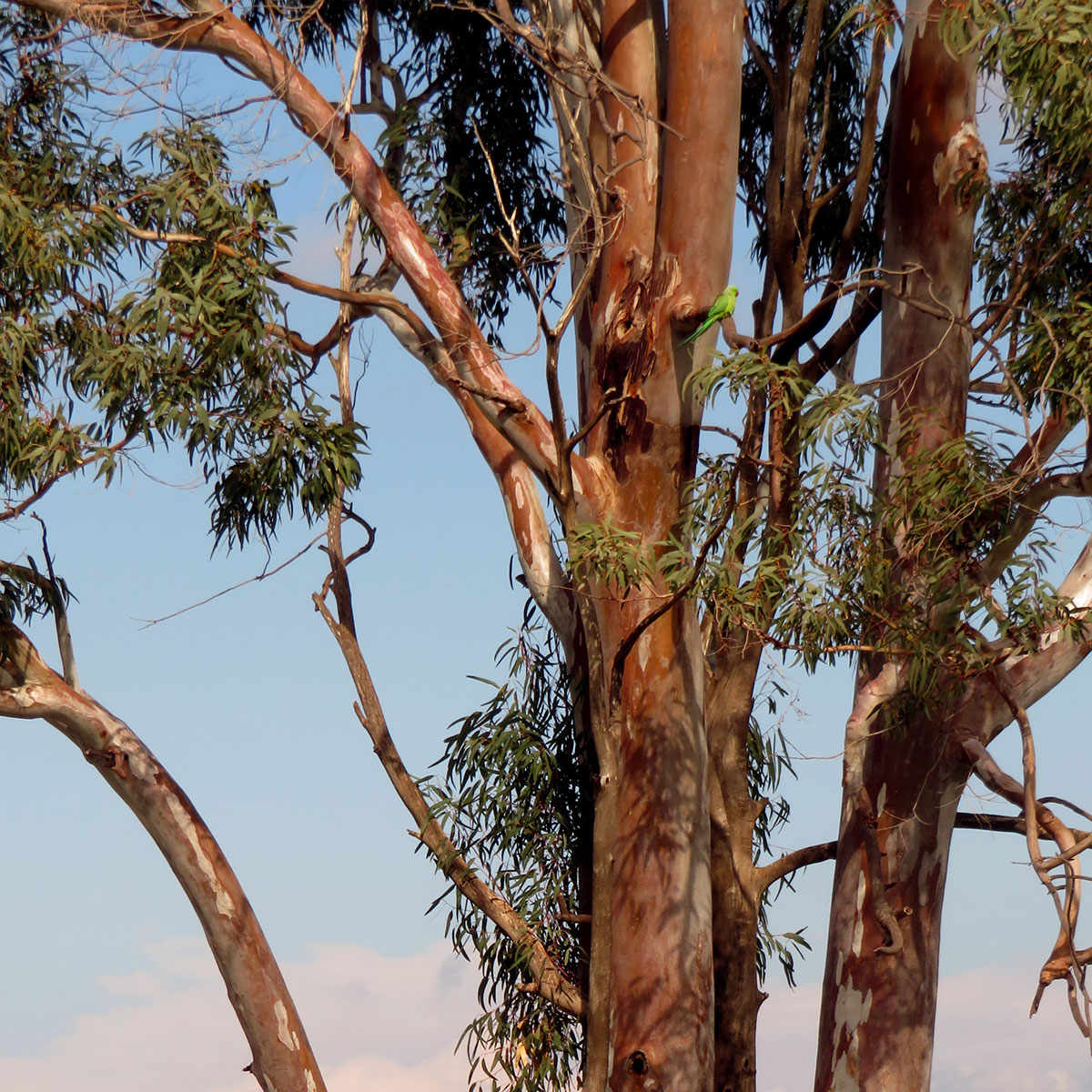
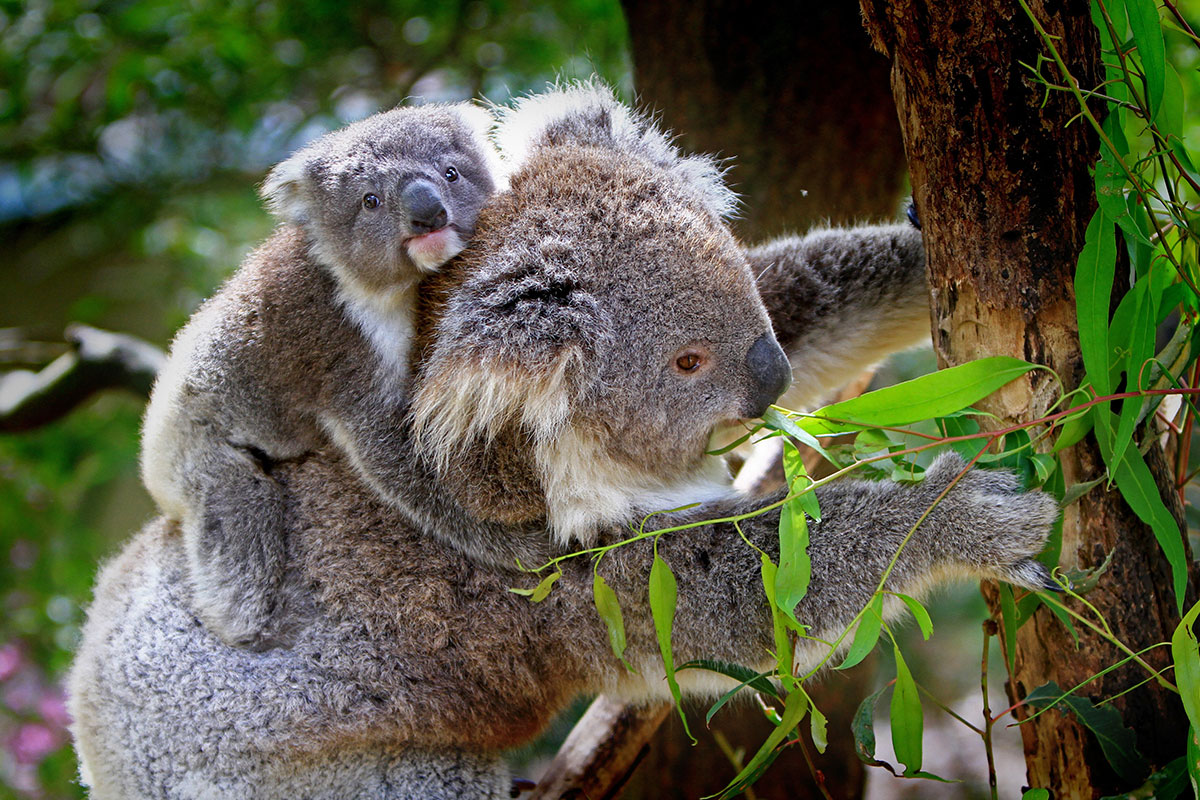
Koala
Koalas are a marsupial native to Australia, and are known for their fuzzy ears and sleepy demeanor. They are arboreal animals, meaning they spend most of their time in trees, and are known for their specialized diet of eucalyptus leaves. They are very rare to see in the area, we only heard them twice in 8 years. Locals say you're lucky to see one every 10 years, so don't have high expectation to see one.
Koalas
Koalas are a marsupial native to Australia, and are known for their fuzzy ears and sleepy demeanor. They spend most of their time in trees, and are known for their specialised diet of eucalyptus leaves. It is very rare to see one in the wild, but you can sometimes here them grunting in the trees.
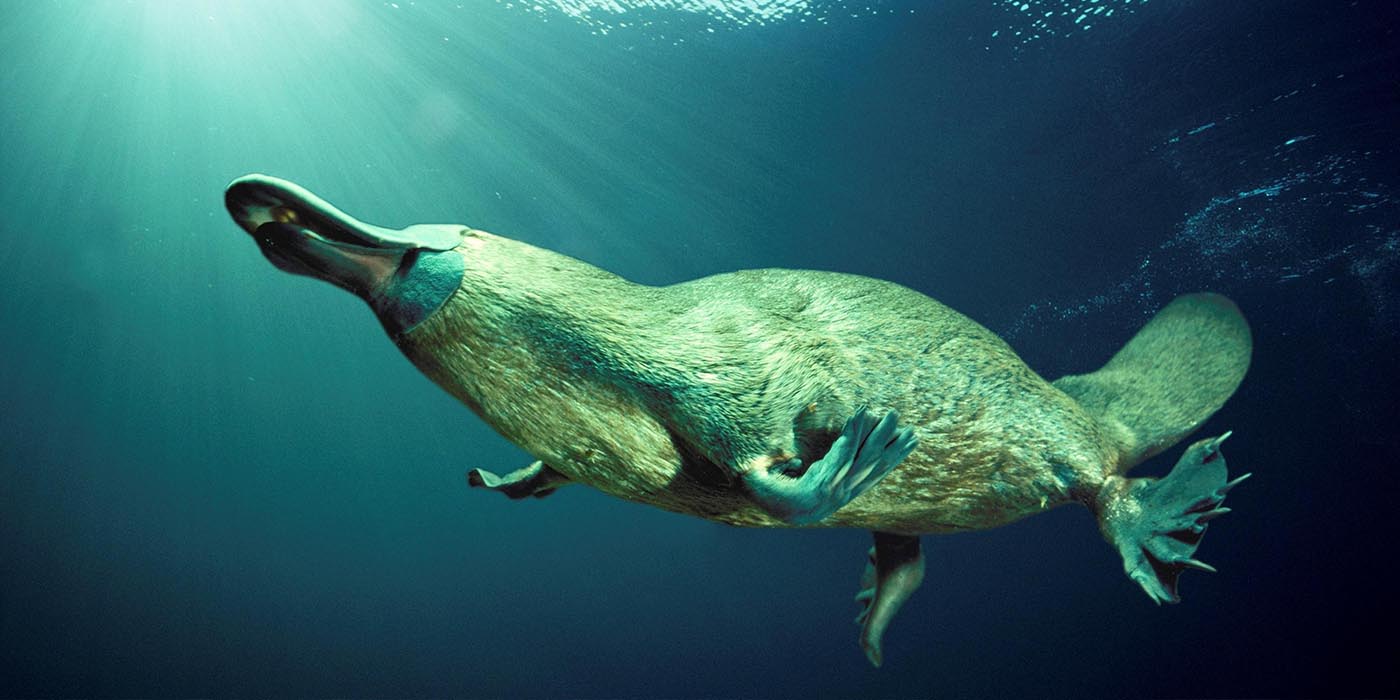
Platypus
Known for their distinctive bill, webbed feet, and dense, waterproof fur, platypus are native to eastern Australia, and they are known to live in Putty Creek, just two kilometres from Wanderlust.
They are semi-aquatic animals that spend most of their time in the water, foraging for food insects, crustaceans, and small fish. They use their bill to detect prey in the muddy bottom of the creek, and have webbed feet that help them manoeuvre through the water.
Platypus build burrows along the banks of creeks and rivers, and are generally active at dawn and dusk, although they can sometimes be seen hunting during the day.
